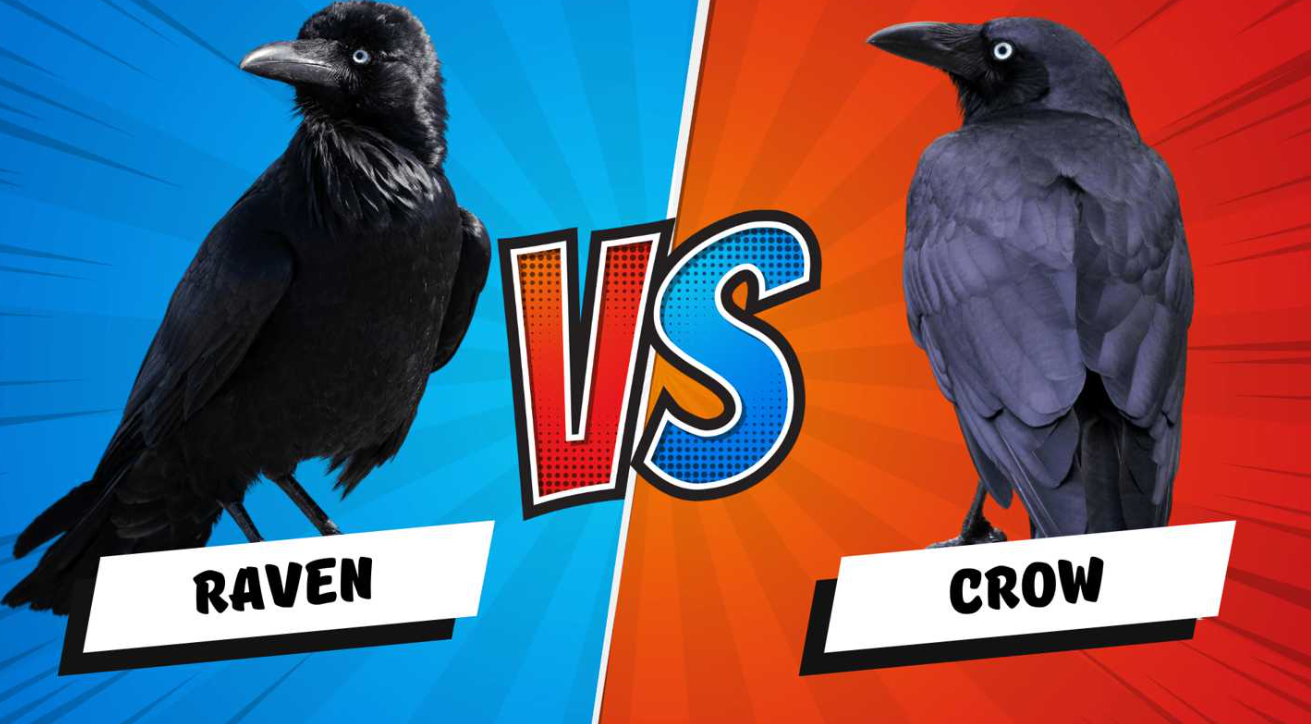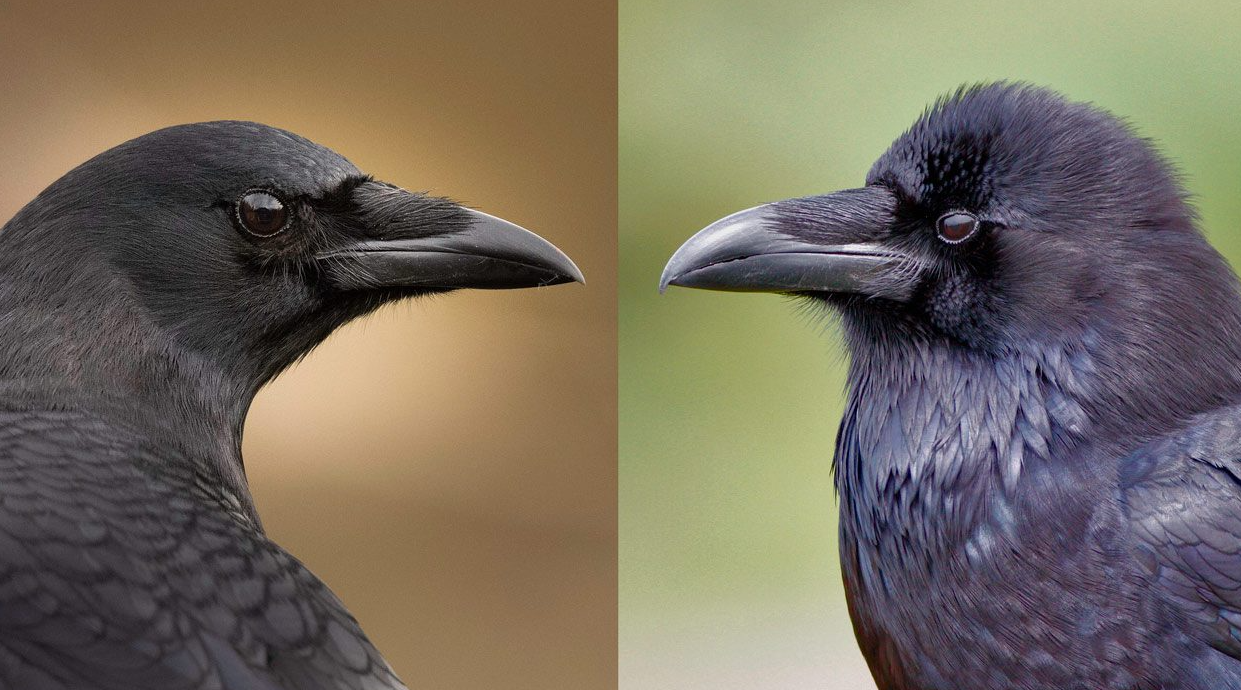
Best Raven vs Crow in the United States 2024
Bird devotees and nature darlings frequently end up hypnotized by the insight, versatility, and persona of ravens and crows. While these two birds share numerous likenesses, their extraordinary attributes make them particular and entrancing by their own doing. In this exhaustive aide, we’ll dig into the distinctions and similitudes among ravens and crows, Raven vs Crow offering experiences into their way of behaving, environments, and jobs in biological systems. Whether you’re a birdwatcher, scientist, or basically inquisitive, this article will assist you with exploring the enthralling universe of these corvids.
Understanding Ravens and Crows: The Basics
Ravens and crows are individuals from the corvid family, Raven vs Crow which is famous for its knowledge and critical thinking abilities. The two birds can be tracked down all through the US, making them natural yet confounding figures in different scenes.
Key Differences Between Ravens and Crows
- Size and Appearance:
- Ravens are bigger, with a wingspan of up to 4 feet and a load of around 2.6 pounds. Their plumes are in many cases shaggier, particularly around the throat.
- Crows are more modest, gauging around 1 pound, with sleeker quills and a more uniform look.
- Beak Shape:
- Ravens have a thicker, bended mouth with a noticeable snare at the tip.
- Crows have a more slender, straighter mouth, which is appropriate for a wide assortment of undertakings.
- Vocalizations:
- Ravens produce profound, full croaks and snaps.
- Crows have a sharp sounding “caw” that is more natural to metropolitan inhabitants.
- Flight Examples:
- Ravens coast smoothly, frequently taking off for significant stretches.
- Crows show a more straightforward, fluttering flight style.
Raven vs Crow: Habitat and Distribution in the United States
Where Do Ravens Reside?
Ravens incline toward more stunning, open regions like woodlands, mountains, and deserts. They are usually tracked down in the western US but at the same time are available in pieces of the upper east and The Frozen North.
Where Do Crows Reside?
Crows flourish in different conditions, including metropolitan regions, farmlands, and backwoods. They are far and wide across the whole nation, adjusting great to human-changed scenes.
Certifiable Model:
In public stops like Yellowstone or Yosemite, you’re bound to experience ravens taking off over the rough territory. In the interim, city parks and rural areas across the U.S. are overwhelmed by crows searching for food.
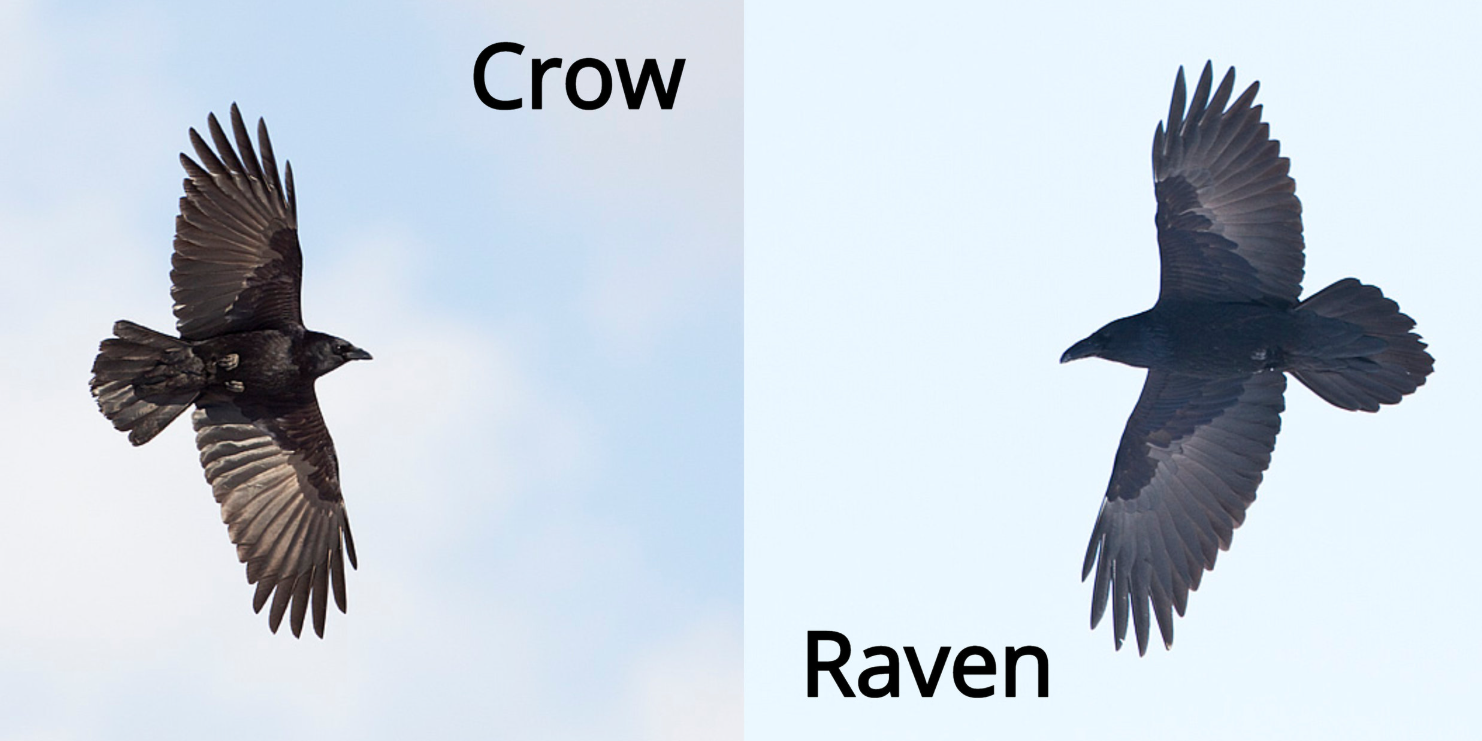
Intelligence and Behavior: A Closer Look
The two ravens and crows are known for their amazing knowledge, frequently contrasted with that of primates. We should investigate a portion of their novel ways of behaving:
- Tool Use:
- Ravens have been noticed utilizing sticks to extricate bugs from fissure.
- Crows are popular for dropping nuts onto streets so passing vehicles can separate them open.
- Social Design:
- Ravens frequently pair forever and show solid family bonds.
- Crows structure huge, boisterous gatherings known as “murders,” which offer security and social cooperation.
- Problem-Settling Abilities:
- Both species succeed in settling complex riddles and learning through perception.
Fun Reality:
Research from the College of Washington showed the way that crows can perceive human faces and recall people who present dangers — a demonstration of their mind blowing memory.
Cultural Significance of Ravens and Crows
Ravens and crows play long held representative parts in different societies:
- Ravens are frequently connected with secret, astuteness, and prescience in legends and folklore. For instance, Local American legends oftentimes depict ravens as makers or joke artists.
- Crows are images of change and insight. In many societies, they are viewed as couriers between the living and the otherworldly domains.
Current Media:
Ravens and crows highlight conspicuously in writing, motion pictures, Raven vs Crow and craftsmanship, from Edgar Allan Poe’s “The Raven” to their emblematic presence in Network programs like Round of Lofty positions.
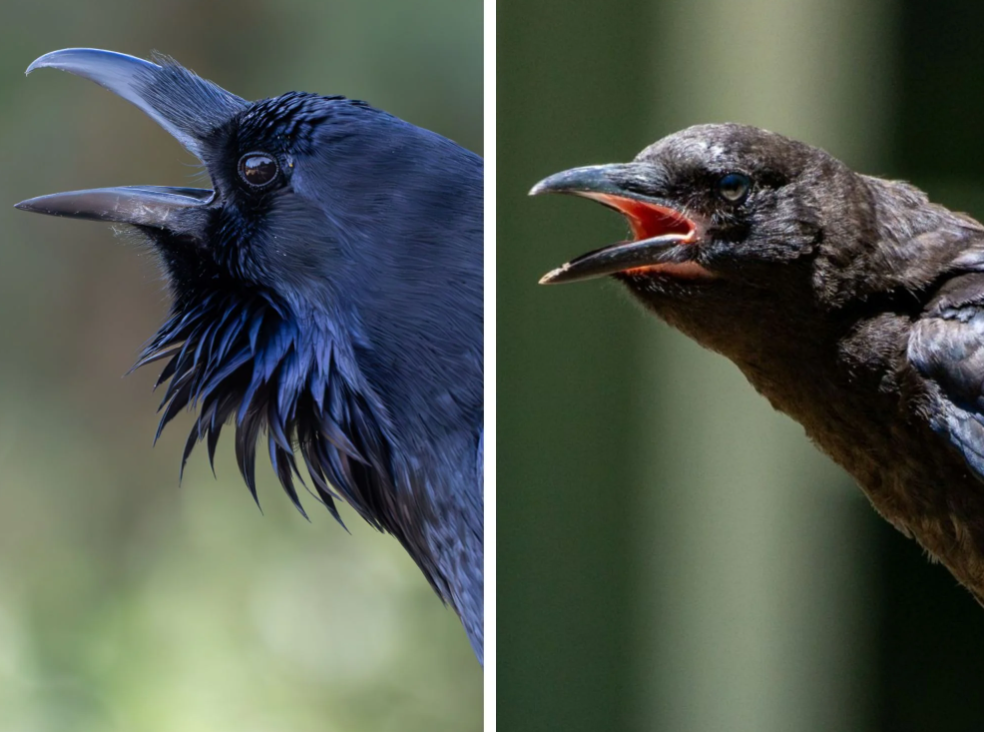
How to Identify Ravens and Crows in the Wild
Spotting and recognizing these birds in their regular natural surroundings can be testing yet fulfilling. Here are a few noteworthy hints:
- Listen for Calls:
- Ravens’ profound croaks reverberation across huge distances.
- Crows’ sharp caws are more monotonous and restricted.
- Observe Flight Examples:
- Watch for ravens’ taking off coasts versus crows’ consistent fluttering.
- Check the Tail Shape:
- Ravens’ tail feathers structure a wedge shape.
- Crows’ tails seem fan-formed when spread.
- Note the Living space:
- In distant regions, you’re probably checking a raven out.
- In metropolitan settings, odds are it’s a crow.
Ace Tip:
Bring optics and a field manual for improve your birdwatching experience. Raven vs Crow Applications like Merlin Bird ID can likewise assist with distinguishing species in view of photographs or sounds.
Why Ravens and Crows Matter to Ecosystems
The two ravens and crows assume imperative parts in keeping up with natural equilibrium:
- Scavengers: They assist with tidying up dead creatures, lessening the spread of sickness.
- Seed Dispersers: By storing and neglecting seeds, they help in plant recovery.
- Predators: They control populaces of bugs and little creatures, adding to biological system security.
Case Study:
In metropolitan regions like Seattle, crows have adjusted to the cityscape, Raven vs Crow adding to squander the board by searching food scraps. Likewise, ravens in distant regions assist with supporting biological systems by going after bothers and scattering seeds.
Common Misconceptions About Ravens and Crows
To truly appreciate the differences between ravens and crows, let’s examine their characteristics side by side:
| Feature | Raven | Crow |
| Size | Larger, heavier build | Smaller, more slender build |
| Beak | Thick, curved beak | Slimmer, straighter beak |
| Vocalization | Deep, guttural croaks | High-pitched, repetitive caws |
| Flight Style | Glide more often, wings pointed | Flap wings more frequently |
| Social Behavior | Solitary or in pairs | Live in large groups (murders) |
FAQs About Ravens vs Crows
- What’s the principal contrast between a raven and a crow?
- Ravens are bigger, with more profound croaks and wedge-molded tails, while crows are more modest with sharp sounding caws and fan-formed tails.
- Are ravens more astute than crows?
- Both are extraordinarily keen, yet research recommends ravens might have a slight edge in critical abilities to think.
- Where might I at any point see ravens and crows in the US?
- Ravens are normal in public stops and far off regions, while crows are far reaching Raven vs Crow across urban communities, rural areas, and rustic locales.
- Do ravens and crows connect with one another?
- Indeed, their domains at times cross-over, prompting incidental rivalry for food and assets.
- Might I at any point keep a raven or crow as a pet?
- It against the law against the law to keep wild birds like ravens and crows as pets in the U.S. under the Transitory Bird Settlement Act.
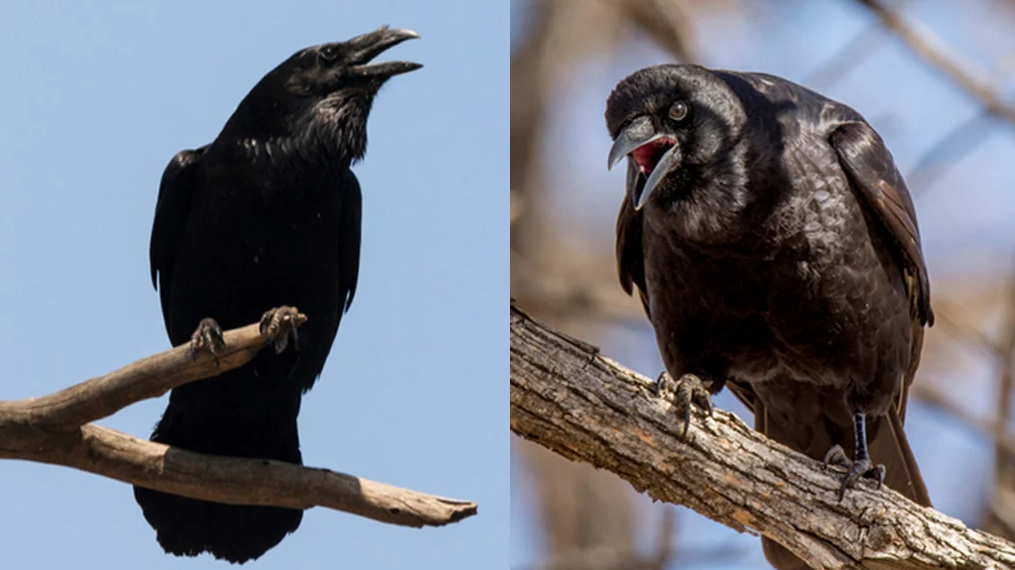
Conclusion
The well established discussion of raven versus crow stays an intriguing point for bird devotees and nature darlings. By figuring out their disparities, appreciating their knowledge, and noticing their jobs in biological systems, Raven vs Crow we gain a more profound association with the normal world. Whether you’re climbing in the Rockies or walking around a city park, look out for these noteworthy birds. Their presence advances the scenes of the US and offers vast open doors for disclosure.
For more insights into the animal kingdom, explore our Animal Careness Blog. You can also visit resources like the Audubon Society for detailed guides and birdwatching tips.
must read

